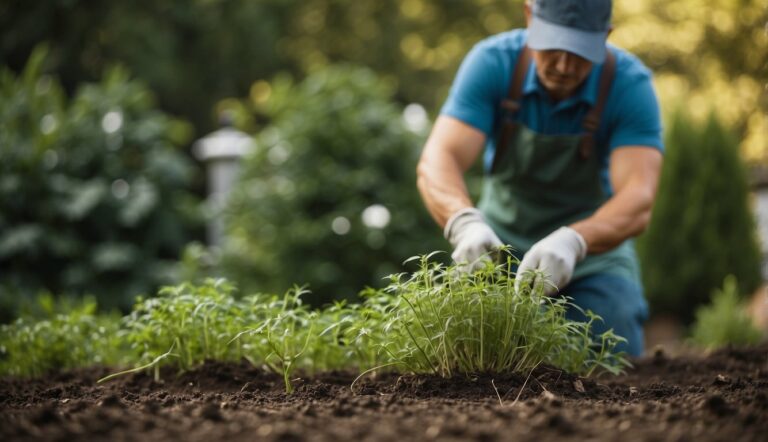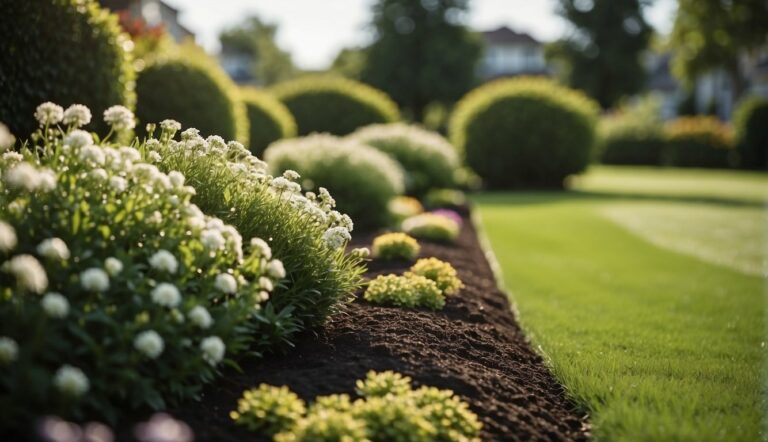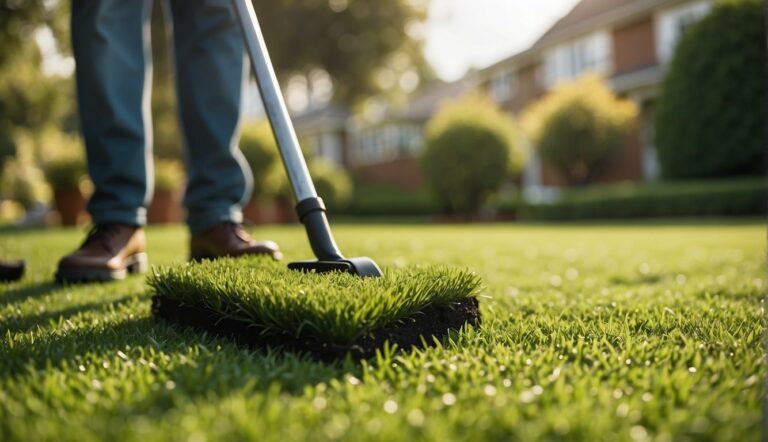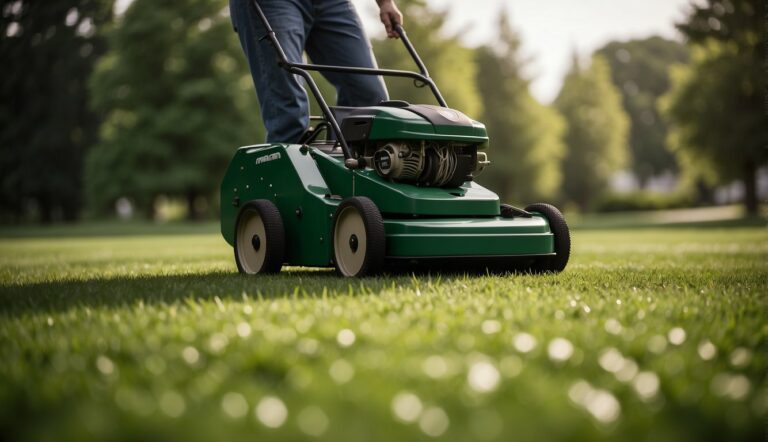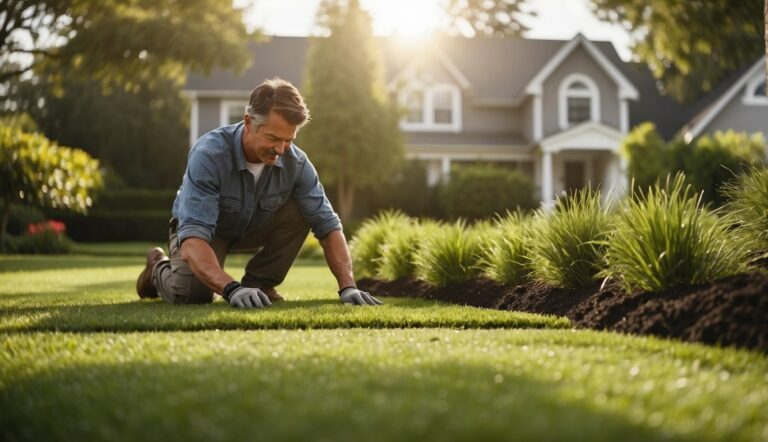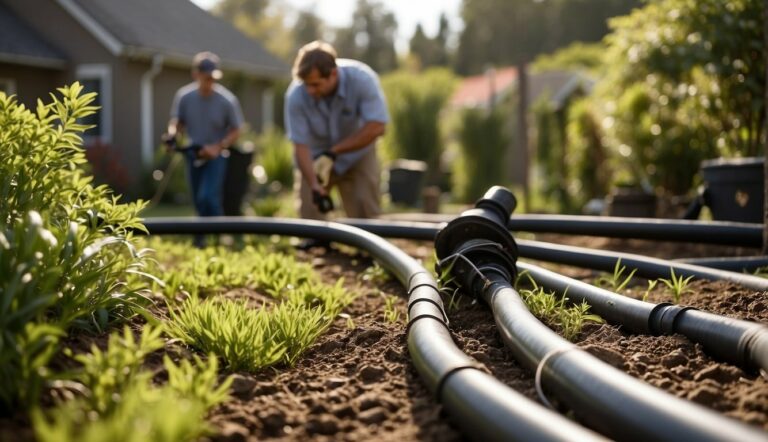A beautifully seeded lawn serves as the cornerstone of curb appeal and outdoor enjoyment. At our landscaping company, we’ve honed the art of lawn seeding and overseeding through years of hands-on experience, ensuring our clients boast the healthiest, most vibrant lawns in their neighborhoods. Lawn seeding is an essential process for new lawns, setting the foundation for strong growth, while overseeding rejuvenates and thickens existing turf, adding resilience against pests and harsh weather.
Lawn care is more than a task; it’s an ongoing commitment to the environment around your home. Recognizing the ideal times and techniques for seeding and overseeding is crucial, and as local experts, we bring you tailored solutions that fit the unique needs of your lawn. Whether your goal is restoring patchy areas or simply enhancing the density of your lawn, our professional team provides the meticulous service your yard deserves.
Our lawn maintenance packages are designed with your landscape’s longevity in mind. Utilizing industry-best practices, we ensure optimal seed-soil contact and the perfect timing for each application to maximize germination rates. We optimize every step from soil preparation to selecting the right seed blends, so our community can enjoy lush, green lawns season after season.
Essentials of Lawn Seeding and Overseeding
In our extensive experience in lawn care, we’ve identified key steps that ensure the success of both seeding and overseeding. These principles are fundamental to achieving a vibrant and healthy lawn.
Understanding the Basics
We know that both lawn seeding and overseeding involve spreading grass seed over soil to encourage new turf growth. Seeding establishes a new lawn or repairs a severely damaged one, whereas overseeding is adding new grass seed to existing turf without turning the soil. It’s essential for maintaining a dense, lush lawn, providing the soil and existing turf with fresh grass species that can withstand pests, diseases, and changing weather.
Choosing the Right Time
Timing is crucial for seed germination and the development of a strong root system. Here’s a simplified chart to guide you:
| Climate Zone | Optimal Seeding Time | Optimal Overseeding Time |
|---|---|---|
| Cooler (Northern) | Early Fall | Early Fall |
| Transitional | Early Fall or Early Spring | Early Fall |
| Warmer (Southern) | Late Spring to Early Summer | Fall |
In cooler climates, early fall is ideal as the soil is warm, moisture is more abundant, and the temperatures are mild. For warmer regions, late spring to early summer is suitable for seeding, with overseeding best done in fall when conditions are conducive for cool-season grasses like Kentucky bluegrass, perennial ryegrass, and tall fescue.
Selecting Suitable Grass Species
Selecting the right grass species is essential to match local climate conditions and the specific needs of your lawn. We recommend:
- Cooler Climates: Kentucky bluegrass, perennial ryegrass, and tall fescue for high cold tolerance and germination rates.
- Warmer Climates: Bermuda grass and Zoysia for their ability to handle heat and drought conditions.
Choose varieties of grass that complement each other to create a robust mix that can better resist wear and maintain color throughout the season. Always opt for high-quality seeds with a proven track record of germination and establishment.
Lawn Preparation Techniques
Before laying down seed for a new lawn or overseeding an existing one, proper soil preparation is paramount. We ensure that the soil is conducive to seed germination and grass growth by testing and amending the soil and addressing thatch and compaction through effective aeration practices.
Soil Testing and Amendment
We begin by conducting a soil test to determine the pH level and nutrient profile of your lawn’s soil. Balanced pH levels and proper nutrients are crucial for healthy grass growth. From the results, we accurately tailor a soil amendment plan that often includes adding compost to enrich the soil with organic matter.
- Soil pH: Ideal range 6.0-7.0
- Nutrients: Adding nitrogen, phosphorous, and potassium, as required
Aeration and Thatch Management
Compacted soil and excessive thatch can deter your lawn’s health, hindering root growth and nutrient uptake. We combat these issues through core aeration, a process where we remove small plugs of soil, creating space for air, water, and nutrients to penetrate the root zone.
- Core Aeration: Recommended annually or biannually, depending on lawn traffic and soil type
- Thatch Removal: De-thatching is done when thatch layer exceeds 1/2 inch
By ensuring the soil is optimally prepared, we create the ideal conditions necessary for seeds to establish and flourish. As experts in lawn care, our approach is refined through years of experience and dedication to the craft of landscaping.
Effective Seeding Methods
Seeding is crucial for achieving a dense and vibrant lawn. Our methods ensure optimal seed-to-soil contact, critical for successful germination.
Manual vs. Mechanical Seeding
Manual Seeding: For small areas or minor repairs, hand-broadcasting seeds evenly across the soil surface is both practical and cost-effective. We prioritize uniform distribution to avoid patchy growth.
- Pros:
- Total control over seed placement
- Ideal for small or tricky spaces
- Cons:
- Labor-intensive
- Less consistent coverage
Mechanical Seeding: Large lawns benefit from our mechanical spreaders that ensure even seed distribution. For full-scale lawn restoration, we use power seeding techniques to directly insert seeds into the soil.
- Pros:
- Fast and efficient for larger areas
- Even and precise seed application
- Cons:
- Requires machinery
- Less feasible for small patches
Optimizing Seed-to-Soil Contact
Achieving strong seed-to-soil contact is non-negotiable. This is why we meticulously prepare the area by aerating the soil and adding a thin layer of topsoil if necessary.
Soil Preparation:
- Aerate: We perforate the lawn, allowing air and moisture to penetrate the soil.
- Topsoil Application: If needed, we apply a fine layer of topsoil to protect the seeds and retain moisture.
Seeding:
- Spread Seeds: Deploy seeds using the chosen method based on lawn size and condition.
- Ensure Contact: Lightly rake the area to cover seeds with soil, maximizing contact.
Aftercare:
- Water: Provide consistent moisture to support seed germination.
- Monitor: We keep an eye on growth and make necessary lawn care adjustments.
Lawn Care Post-Seeding
After seeding your lawn, the care you provide in the following weeks is crucial for establishing a robust and healthy turf. This involves precise watering practices and a targeted approach to fertilization and nutrient management.
Watering Practices
Proper watering is essential to moisture retention for newly seeded grass. Here’s how we manage it:
- Frequency: We water lightly but consistently, keeping the top inch of soil moist without causing runoff. This usually means watering twice a day for the first few weeks.
- Adjustment: As seedlings establish, we gradually reduce watering frequency to encourage deeper grass roots growth.
Remember, too much water can lead to disease, and too little can cause the seedlings to dry out.
Fertilization and Nutrient Management
Fertilization plays a vital role in the maintenance of a lush lawn:
- Initial Application: We apply a starter fertilizer right after seeding to provide essential nutrients that support growth.
- Ongoing Care: Regular soil tests guide our balanced applications of nitrogen, phosphorus, and potassium to meet your lawn’s needs without excess.
Our approach ensures your lawn receives the correct amount of nutrients to thrive without contributing to environmental harm.
Troubleshooting Common Issues
When maintaining a healthy and vibrant lawn, it’s crucial to understand that common problems like weeds, bare spots, and pest control are all solvable with the right approach. Our years of landscaping expertise guide us in effectively tackling these challenges.
Dealing with Weeds and Pests
Weeds and pests can be detrimental to lawn health, but consistent weed control and vigilance against insect damage can preserve your lawn’s vitality. For weed management, we recommend a two-pronged approach: pre-emergent herbicides to prevent weed seeds from germinating and post-emergent herbicides for existing weeds. Here’s a simple plan that we’ve found to be effective:
- Early Identification: Spot-treat weeds as soon as they appear.
- Regular Feeding: A well-fed lawn can better resist weed invasions.
- Appropriate Pesticides: Use pesticides selectively to target specific pests without harming the grass.
| Pests | Signs | Treatment |
|---|---|---|
| Grubs | Spongy turf, brown patches | Targeted insecticides |
| Chinch bugs | Yellow, then brown grass | Insecticide soap treatments |
| Moles | Raised soil trails | Repellents or traps |
Keep in mind that overuse of chemicals can stress the lawn—our approach is always targeted and mindful.
Repairing Bare Spots and Thin Areas
Bare spots can arise from drought, disease, and heavy foot traffic. To tackle these areas and encourage a thick, lush lawn, we employ the following steps:
- Soil Preparation: Lightly rake and loosen the soil in bare spots.
- Seeding: Choose a grass seed that matches your lawn and apply it evenly. Ensure good seed-to-soil contact.
- Consistent Watering: Keep the area moist until seeds germinate and establish.
For areas that are thin but not completely bare:
- Aerate the soil to improve nutrient and water absorption.
- Overseed: Apply grass seed over the existing lawn to increase density.
- Regular Maintenance: Fertilize and water properly to support growth.
Here’s how we address common causes of thinning:
| Cause | Solution |
|---|---|
| Drought | Regular, deep watering to encourage root growth |
| Disease | Identify the disease and apply appropriate fungicide |
| Foot Traffic | Install stepping stones or limit access to allow recovery |
By adopting these measures, we’ve successfully revitalized many lawns in our community.
